The Idiopathic Pulmonary Fibrosis (IPF) Treatment Market exhibits a diverse geographic landscape, with significant valuations across various regions. In 2024, North America is projected to dominate the market with a valuation of 1.652 USD Billion, reflecting its majority holding due to advanced healthcare infrastructure and high prevalence of IPF. Europe follows with a valuation of 0.927 USD Billion, benefiting from robust Research and Development initiatives aimed at improving treatment options.
The Asia-Pacific (APAC) region is anticipated to grow notably, reaching 0.685 USD Billion by 2024, driven by increasing awareness and improving healthcare access in developing countries.South America and the Middle East and Africa (MEA) segments are valued at 0.403 USD Billion and 0.483 USD Billion respectively, illustrating their emerging status in the global market. While South America faces challenges in healthcare delivery, both regions present opportunities for growth as awareness of IPF increases. The overall market growth will be influenced by trends such as enhanced diagnostics and innovative therapies aimed at improving patient outcomes.
Idiopathic Pulmonary Fibrosis (IPF) Treatment Market Route of Administration Insights
The Idiopathic Pulmonary Fibrosis (IPF) Treatment Market exhibits significant diversity in its Route of Administration, with options such as Oral, Intravenous, Subcutaneous, and Inhalation playing critical roles in therapeutic delivery. The Oral route, frequently preferred by patients due to its convenience and ease of use, dominates a considerable portion of the market, making it a focal point for drug development. Intravenous administration offers a rapid onset of action and is essential for patients requiring immediate intervention. Moreover, the Subcutaneous route provides an alternative for individuals who may not tolerate other methods, enhancing patient adherence.
Inhalation therapies are gaining traction as they directly deliver drugs to the lungs, addressing the unique pathology of IPF. Overall, the diversity of administration routes not only caters to varied patient needs but also fosters innovation in drug formulations and delivery systems, presenting substantial opportunities for growth within the Idiopathic Pulmonary Fibrosis (IPF) Treatment Market.
Idiopathic Pulmonary Fibrosis (IPF) Treatment Market Distribution Channel Insights
The Idiopathic Pulmonary Fibrosis (IPF) Treatment Market is experiencing notable growth, driven significantly by its distribution channels. it is expected to grow substantially, with a compound annual growth rate of 6.73 percent from 2025 to 2035. The distribution channels for IPF treatments include Hospital Pharmacies, Retail Pharmacies, Online Pharmacies, and Specialty Clinics. Hospital Pharmacies play a crucial role by providing immediate access to medications and tailored care for inpatients, facilitating better disease management.
Retail Pharmacies offer convenience, making treatment more accessible to the general population, while Online Pharmacies are contributing to the growing trend of digital health solutions, allowing patients to procure medications easily from home. Specialty Clinics are significant as they cater specifically to IPF patients, enabling expert consultations and comprehensive treatment plans. This diversification in distribution channels caters to various patient preferences and needs, boosting the overall Idiopathic Pulmonary Fibrosis (IPF) Treatment Market revenue while meeting the increasing demand for specialized care and convenient access to treatments.
Idiopathic Pulmonary Fibrosis (IPF) Treatment Market End User Insights
The Idiopathic Pulmonary Fibrosis (IPF) Treatment Market focuses significantly on various End-user categories, reflecting the evolving healthcare landscape. Hospitals are vital players in this market, providing specialized care and advanced technologies that address the complexities of IPF. Home care has emerged as a crucial facet, catering to the increasing number of patients preferring at-home management due to its convenience and comfort. Ambulatory Surgical Centers are also contributing positively, offering outpatient services that improve access to procedures without the need for extended hospital stays.
Overall, these End Users are shaping the Idiopathic Pulmonary Fibrosis (IPF) Treatment Market segmentation, reflecting a shift towards more patient-centered care models. The market growth in these categories is driven by an increasing prevalence of IPF, advancements in medical technology, and a rising emphasis on home-based treatment options. However, challenges like reimbursement issues and the need for healthcare professional training persist, highlighting significant opportunities for innovation and improvement within each end-user sector.
Idiopathic Pulmonary Fibrosis (IPF) Treatment Market Regional Insights
The Idiopathic Pulmonary Fibrosis (IPF) Treatment Market exhibits a diverse geographic landscape, with significant valuations across various regions. In 2024, North America is projected to dominate the market with a valuation of 1.652 USD Billion, reflecting its majority holding due to advanced healthcare infrastructure and high prevalence of IPF. Europe follows with a valuation of 0.927 USD Billion, benefiting from robust Research and Development initiatives aimed at improving treatment options. The Asia-Pacific (APAC) region is anticipated to grow notably, reaching 0.685 USD Billion by 2024, driven by increasing awareness and improving healthcare access in developing countries.
South America and the Middle East and Africa (MEA) segments are valued at 0.403 USD Billion and 0.483 USD Billion respectively, illustrating their emerging status in the global market. While South America faces challenges in healthcare delivery, both regions present opportunities for growth as awareness of IPF increases. The overall market growth will be influenced by trends such as enhanced diagnostics and innovative therapies aimed at improving patient outcomes.
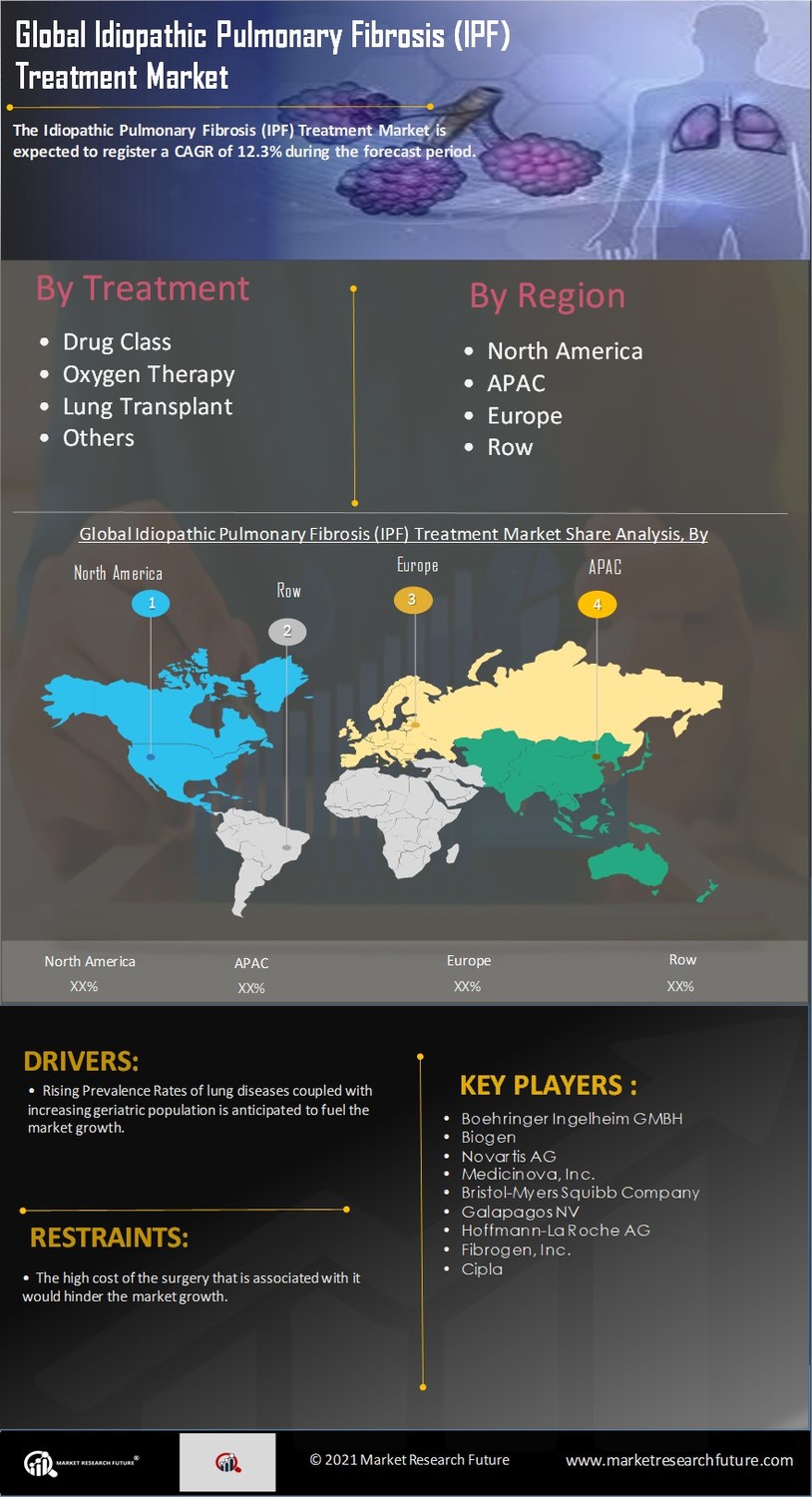

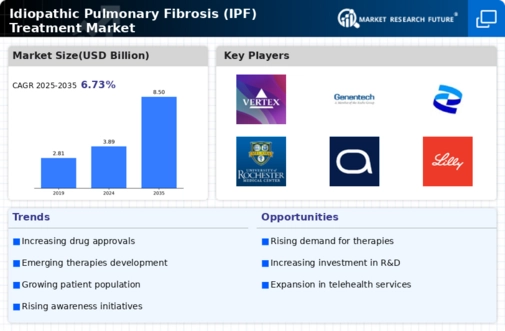
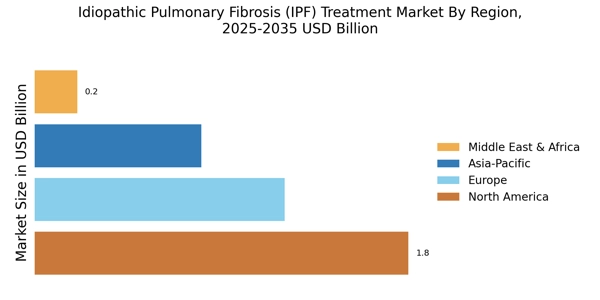


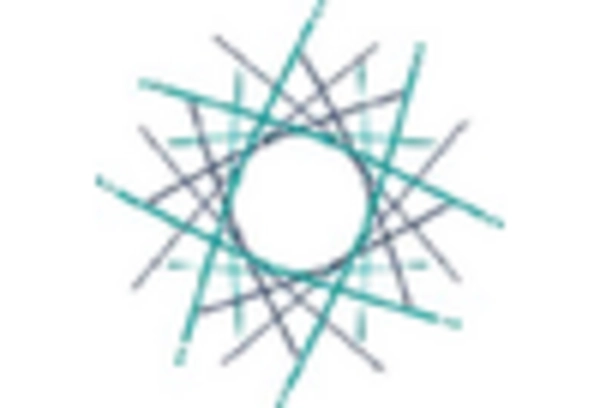
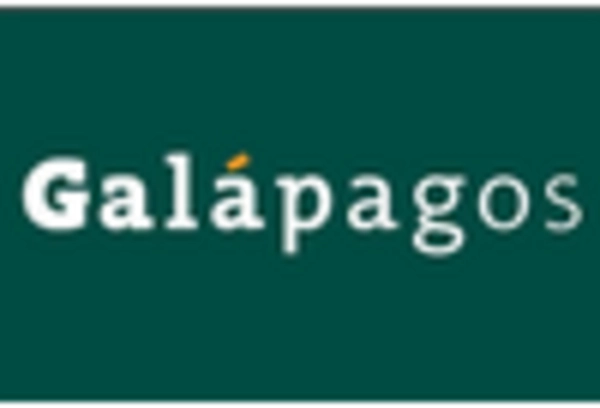










Leave a Comment